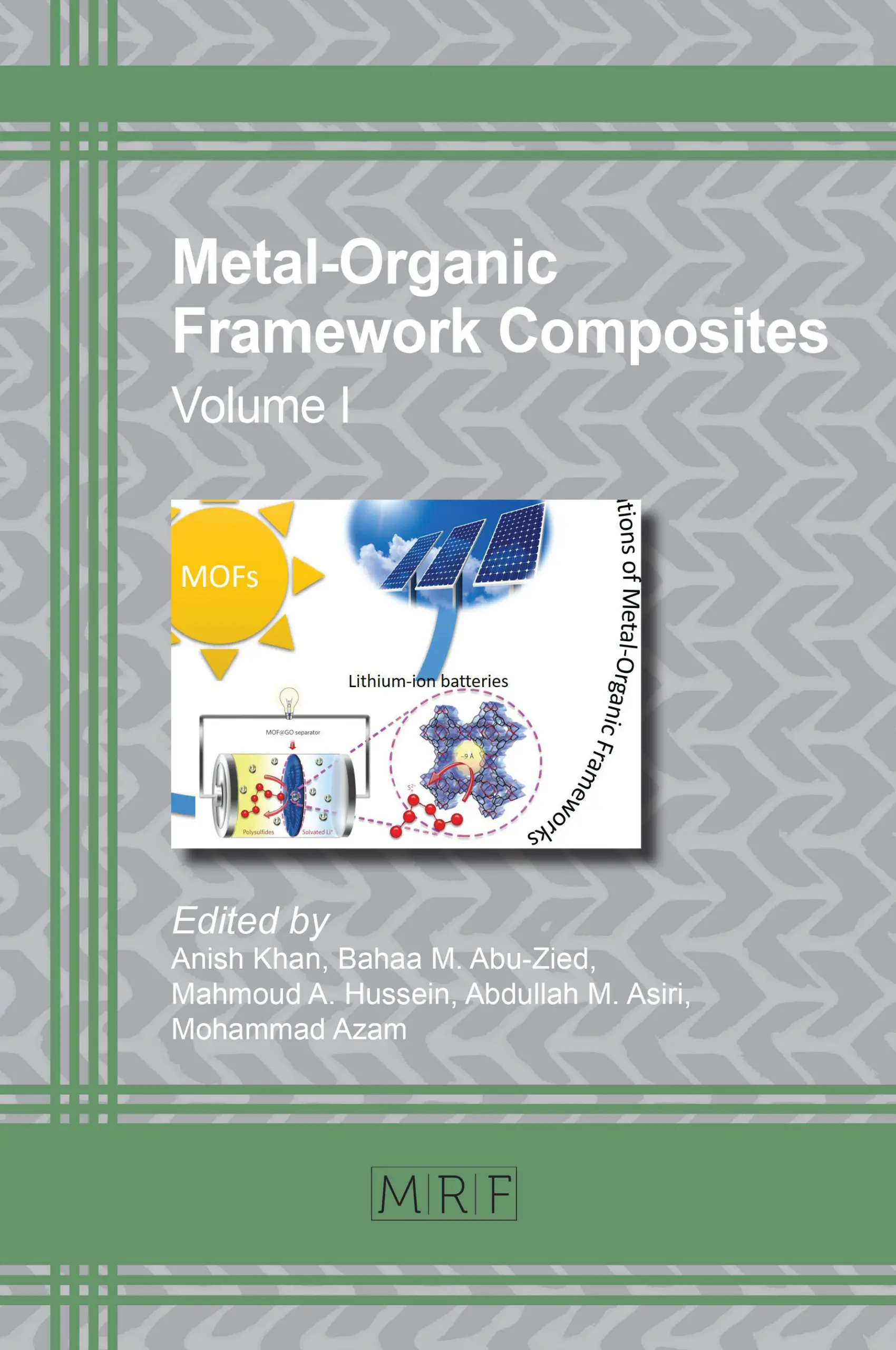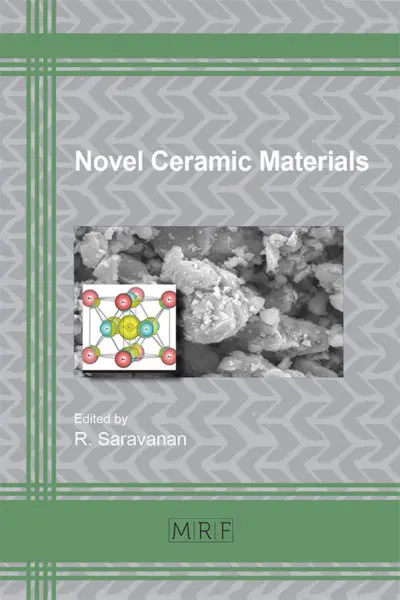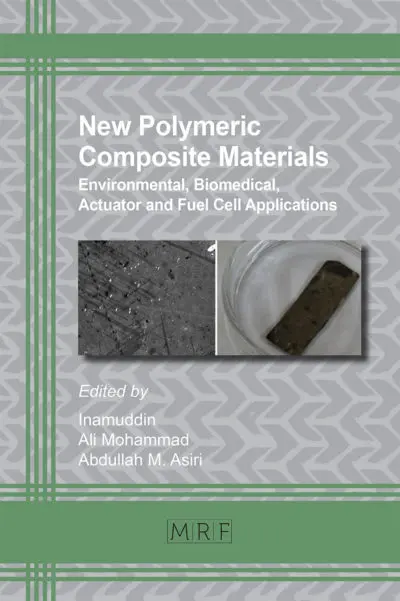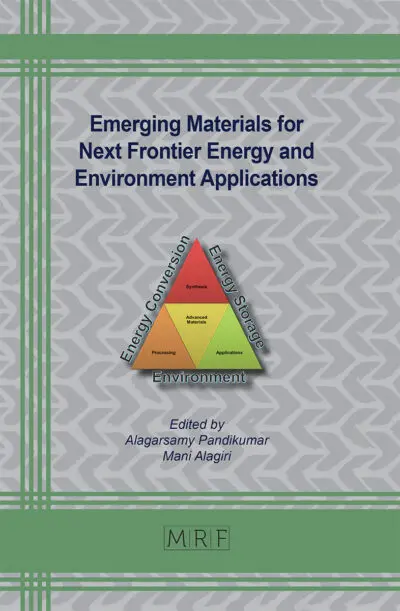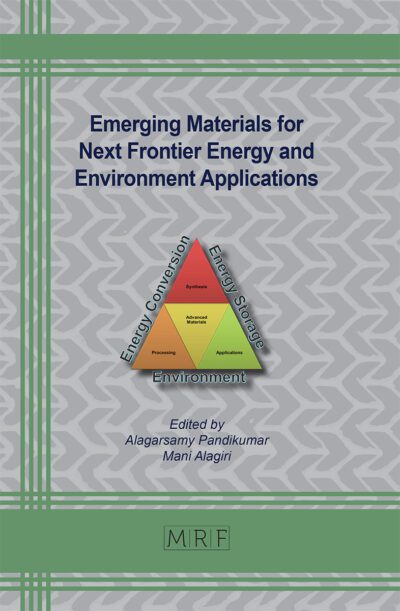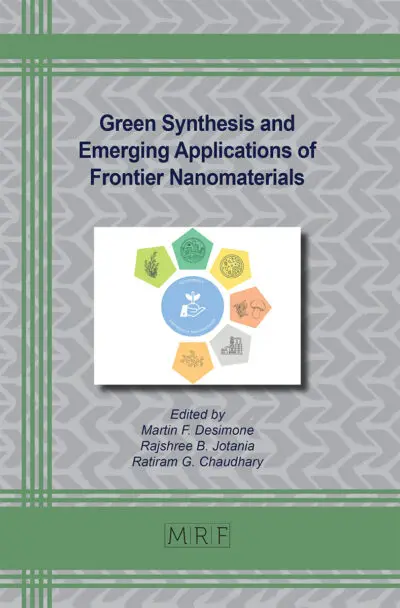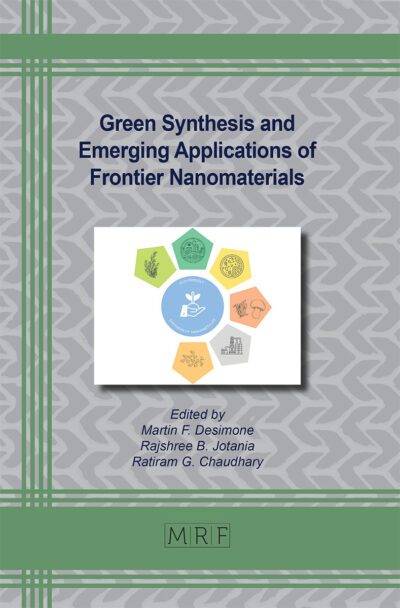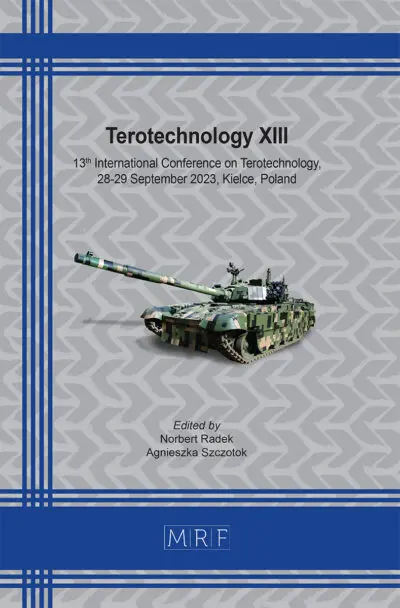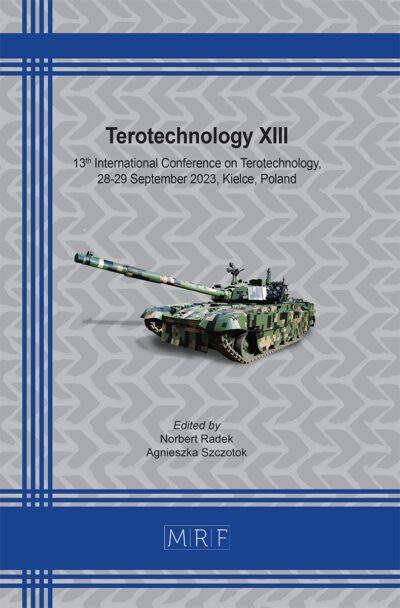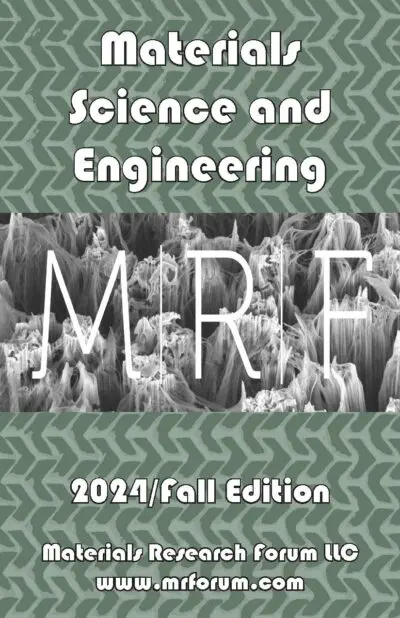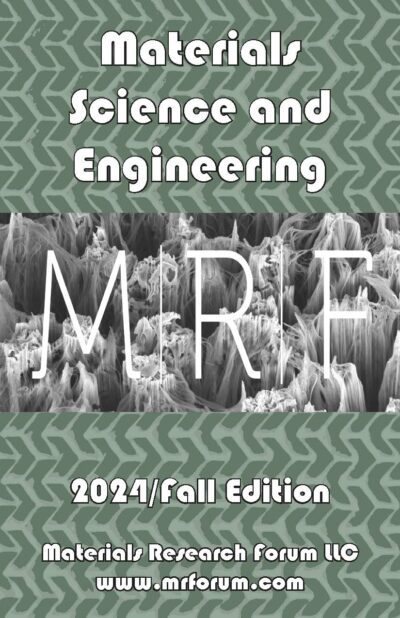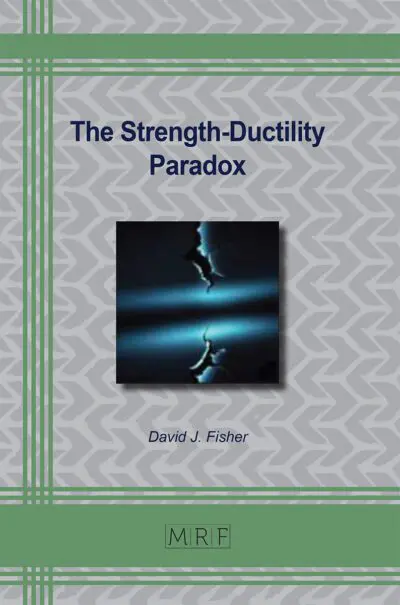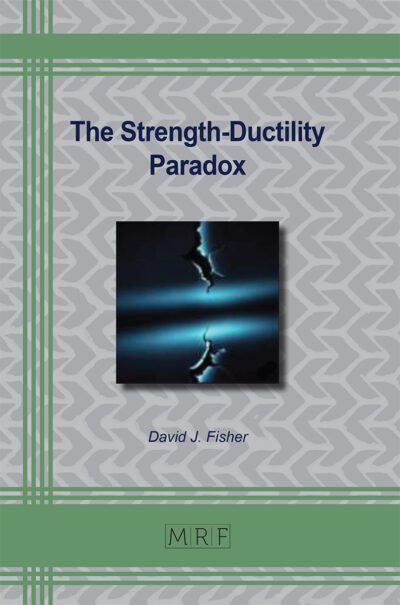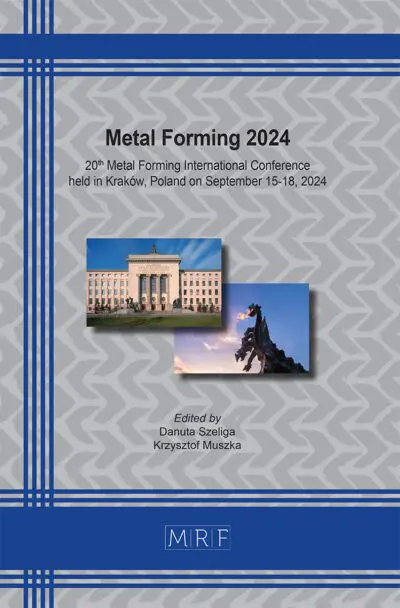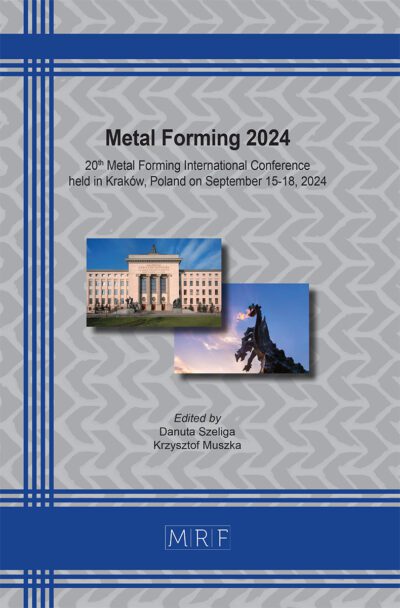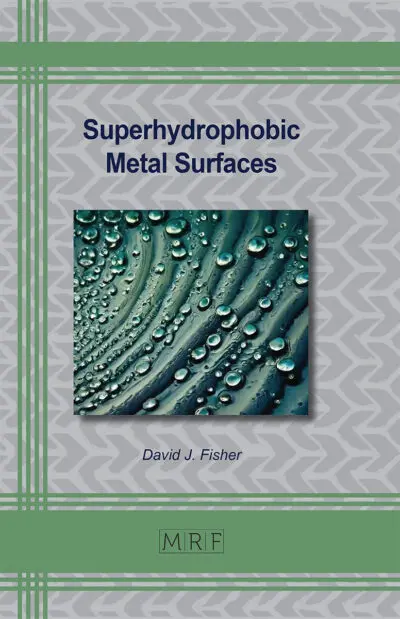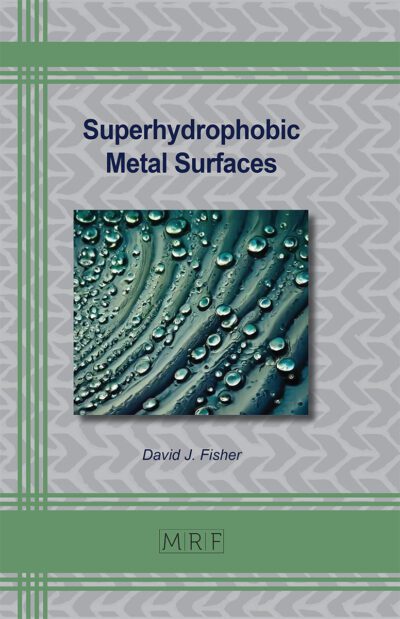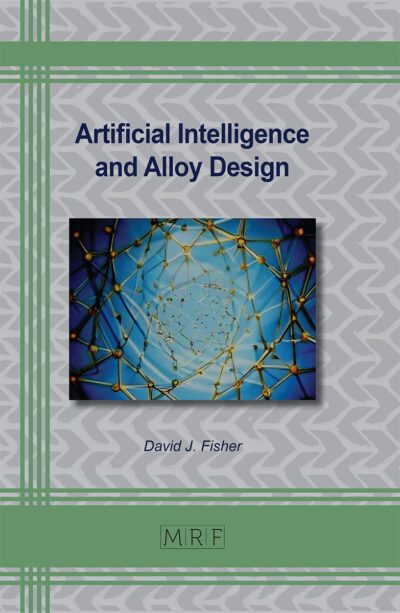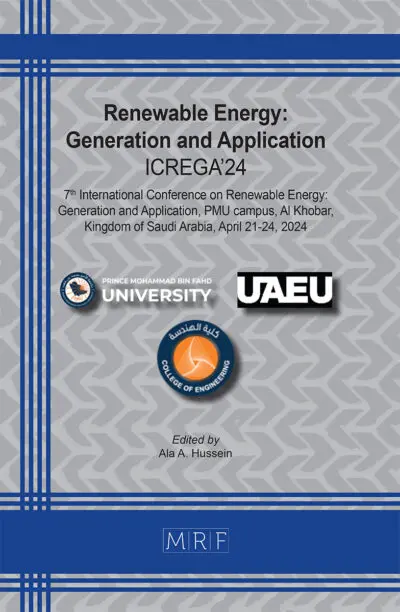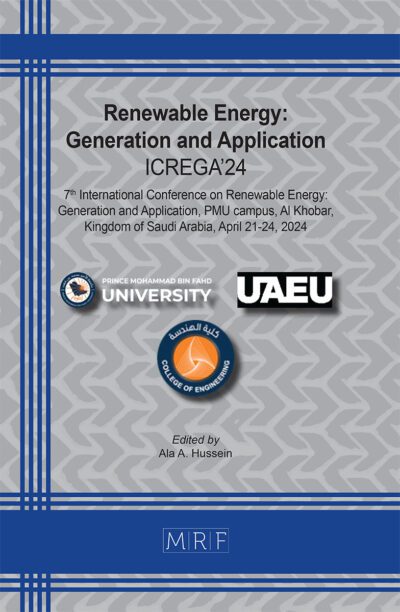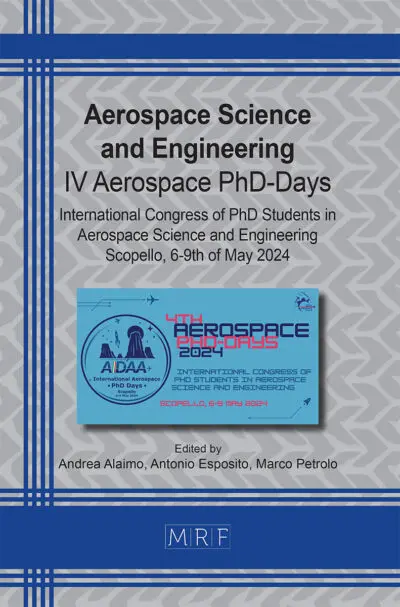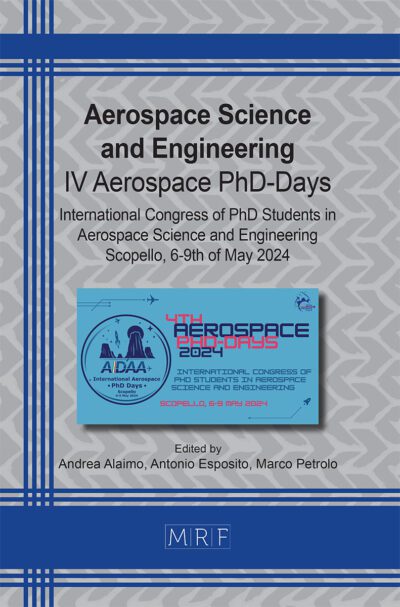Designing Metal-Organic Frameworks for Clean Energy Applications
Vasi Uddin Siddiqui, Afzal Ansari, Irshad Ahmad, Imran Khan, M. Khursheed Akram, Weqar Ahmad Siddiqi, Anish Khan, Abdullah Mohamed Asiri
The high surface area metal organic-frameworks (MOFs) are highly porous structures made of distinct inorganic and organic building blocks, so their chemical and structural multiplicity is vast. While that variety has led to lots of potential applications, including fuel cell, solar cell, supercapacitor, lithium-ion batteries, gas storage and conversion, it also means that finding the optimal MOF for a specific application is hard to reach. This chapter discusses the design approach of MOFs based on clean energy applications in four categories. It starts with an overview of the MOFs approach for the giant problem of clean energy. It then explains how the MOFs material is a strong candidate to overcome this problem by comparing the different design approaches. By the end of the chapter, the challenges facing to commercialize this technique is discussed.
Keywords
Metal Organic-Frameworks, Fuel Cell, Solar Cell, Supercapacitor, Clean Energy
Published online 6/30/2019, 30 pages
Citation: Vasi Uddin Siddiqui, Afzal Ansari, Irshad Ahmad, Imran Khan, M. Khursheed Akram, Weqar Ahmad Siddiqi, Anish Khan, Abdullah Mohamed Asiri, Designing Metal-Organic Frameworks for Clean Energy Applications, Materials Research Foundations, Vol. 53, pp 140-169, 2019
DOI: https://doi.org/10.21741/9781644900291-7
Part of the book on Metal-Organic Framework Composites
References
[1] H. Zhang, J. Nai, L. Yu, X.W. (David) Lou, Metal-Organic-Framework-Based Materials as Platforms for Renewable Energy and Environmental Applications, Joule. 1 (2017) 77–107. https://doi.org/10.1016/j.joule.2017.08.008
[2] D. Liu, J.J. Purewal, J. Yang, A. Sudik, S. Maurer, U. Mueller, J. Ni, D.J. Siegel, MOF-5 composites exhibiting improved thermal conductivity, Int. J. Hydrogen Energy. 37 (2012) 6109–6117. https://doi.org/10.1016/j.ijhydene.2011.12.129
[3] V. Bon, Metal-organic frameworks for energy-related applications, Curr. Opin. Green Sustain. Chem. 4 (2017) 44–49. https://doi.org/10.1016/j.cogsc.2017.02.005
[4] W. Lu, Z. Wei, Z.-Y. Gu, T.-F. Liu, J. Park, J. Park, J. Tian, M. Zhang, Q. Zhang, T. Gentle III, M. Bosch, H.-C. Zhou, Tuning the structure and function of metal–organic frameworks via linker design, Chem. Soc. Rev. 43 (2014) 5561–5593. https://doi.org/10.1039/C4CS00003J
[5] D. Zhao, D.J. Timmons, D. Yuan, H.-C. Zhou, Tuning the Topology and Functionality of Metal−Organic Frameworks by Ligand Design, Acc. Chem. Res. 44 (2011) 123–133. https://doi.org/10.1021/ar100112y
[6] H. Furukawa, N. Ko, Y.B. Go, N. Aratani, S.B. Choi, E. Choi, A.O. Yazaydin, R.Q. Snurr, M. O’Keeffe, J. Kim, O.M. Yaghi, Ultrahigh Porosity in Metal-Organic Frameworks, Science (80-. ). 329 (2010) 424–428. https://doi.org/10.1126/science.1192160
[7] O.M. Yaghi, H. Li, Hydrothermal Synthesis of a Metal-Organic Framework Containing Large Rectangular Channels, J. Am. Chem. Soc. 117 (1995) 10401–10402. https://doi.org/10.1021/ja00146a033
[8] S. Qiu, G. Zhu, Molecular engineering for synthesizing novel structures of metal–organic frameworks with multifunctional properties, Coord. Chem. Rev. 253 (2009) 2891–2911. https://doi.org/10.1016/j.ccr.2009.07.020
[9] P. Li, F.-F. Cheng, W.-W. Xiong, Q. Zhang, New synthetic strategies to prepare metal–organic frameworks, Inorg. Chem. Front. 5 (2018) 2693–2708. https://doi.org/10.1039/C8QI00543E
[10] M. Rubio-Martinez, C. Avci-Camur, A.W. Thornton, I. Imaz, D. Maspoch, M.R. Hill, New synthetic routes towards MOF production at scale, Chem. Soc. Rev. 46 (2017) 3453–3480. https://doi.org/10.1039/c7cs00109f
[11] N. Stock, S. Biswas, Synthesis of Metal-Organic Frameworks (MOFs): Routes to Various MOF Topologies, Morphologies, and Composites, Chem. Rev. 112 (2012) 933–969. https://doi.org/10.1021/cr200304e
[12] K.K. Gangu, S. Maddila, S.B. Mukkamala, S.B. Jonnalagadda, A review on contemporary Metal–Organic Framework materials, Inorganica Chim. Acta. 446 (2016) 61–74. https://doi.org/10.1016/j.ica.2016.02.062
[13] R. Seetharaj, P.V. Vandana, P. Arya, S. Mathew, Dependence of solvents, pH, molar ratio and temperature in tuning metal organic framework architecture, Arab. J. Chem. (2016). https://doi.org/10.1016/j.arabjc.2016.01.003
[14] T. Islamoglu, S. Goswami, Z. Li, A.J. Howarth, O.K. Farha, J.T. Hupp, Postsynthetic Tuning of Metal–Organic Frameworks for Targeted Applications, Acc. Chem. Res. 50 (2017) 805–813. https://doi.org/10.1021/acs.accounts.6b00577
[15] N. Linares, A.M. Silvestre-Albero, E. Serrano, J. Silvestre-Albero, J. García-Martínez, Mesoporous materials for clean energy technologies, Chem. Soc. Rev. 43 (2014) 7681–7717. https://doi.org/10.1039/C3CS60435G
[16] Y. Ren, G.H. Chia, Z. Gao, Metal–organic frameworks in fuel cell technologies, Nano Today. 8 (2013) 577–597. https://doi.org/10.1016/j.nantod.2013.11.004
[17] O.Z. Sharaf, M.F. Orhan, An overview of fuel cell technology: Fundamentals and applications, Renew. Sustain. Energy Rev. 32 (2014) 810–853. https://doi.org/10.1016/j.rser.2014.01.012
[18] Y. Zhao, Z. Song, X. Li, Q. Sun, N. Cheng, S. Lawes, X. Sun, Metal organic frameworks for energy storage and conversion, Energy Storage Mater. 2 (2016) 35–62. https://doi.org/10.1016/j.ensm.2015.11.005
[19] A. Morozan, F. Jaouen, Metal organic frameworks for electrochemical applications, Energy Environ. Sci. 5 (2012) 9269. https://doi.org/10.1039/c2ee22989g
[20] X. Zhang, A. Chen, M. Zhong, Z. Zhang, X. Zhang, Z. Zhou, X.-H. Bu, Metal–Organic Frameworks (MOFs) and MOF-Derived Materials for Energy Storage and Conversion, Electrochem. Energy Rev. (2018). https://doi.org/10.1007/s41918-018-0024-x
[21] S.S. Nagarkar, B. Anothumakkool, A. V Desai, M.M. Shirolkar, S. Kurungot, S.K. Ghosh, High hydroxide conductivity in a chemically stable crystalline metal–organic framework containing a water-hydroxide supramolecular chain, Chem. Commun. 52 (2016) 8459–8462. https://doi.org/10.1039/C6CC04436K
[22] P. Ramaswamy, N.E. Wong, B.S. Gelfand, G.K.H. Shimizu, A Water Stable Magnesium MOF That Conducts Protons over 10 –2 S cm –1, J. Am. Chem. Soc. 137 (2015) 7640–7643. https://doi.org/10.1021/jacs.5b04399
[23] W. Cheng, X. Zhao, H. Su, F. Tang, W. Che, H. Zhang, Q. Liu, Lattice-strained metal–organic-framework arrays for bifunctional oxygen electrocatalysis, Nat. Energy. (2019). https://doi.org/10.1038/s41560-018-0308-8
[24] L. Capuano, International Energy Outlook 2018 (IEO2018), 2018. www.eia.gov
[25] D. Gust, T.A. Moore, A.L. Moore, Solar fuels via artificial photosynthesis, Acc. Chem. Res. 42 (2009) 1890–1898. https://doi.org/10.1021/ar900209b
[26] J. Liu, W. Zhou, J. Liu, I. Howard, G. Kilibarda, S. Schlabach, D. Coupry, M. Addicoat, S. Yoneda, Y. Tsutsui, T. Sakurai, S. Seki, Z. Wang, P. Lindemann, E. Redel, T. Heine, C. Wöll, Photoinduced Charge-Carrier Generation in Epitaxial MOF Thin Films: High Efficiency as a Result of an Indirect Electronic Band Gap?, Angew. Chemie Int. Ed. 54 (2015) 7441–7445. https://doi.org/10.1002/anie.201501862
[27] J. Liu, W. Zhou, J. Liu, Y. Fujimori, T. Higashino, H. Imahori, X. Jiang, J. Zhao, T. Sakurai, Y. Hattori, W. Matsuda, S. Seki, S.K. Garlapati, S. Dasgupta, E. Redel, L. Sun, C. Wöll, A new class of epitaxial porphyrin metal–organic framework thin films with extremely high photocarrier generation efficiency: promising materials for all-solid-state solar cells, J. Mater. Chem. A. 4 (2016) 12739–12747. https://doi.org/10.1039/C6TA04898F
[28] W.A. Maza, A.J. Haring, S.R. Ahrenholtz, C.C. Epley, S.Y. Lin, A.J. Morris, Ruthenium(II)-polypyridyl zirconium(IV) metal– organic frameworks as a new class of sensitized solar cells, Chem. Sci. 7 (2016) 719–727. https://doi.org/10.1039/C5SC01565K
[29] D.Y. Lee, C.Y. Shin, S.J. Yoon, H.Y. Lee, W. Lee, N.K. Shrestha, J.K. Lee, S.-H. Han, Enhanced photovoltaic performance of Cu-based metal-organic frameworks sensitized solar cell by addition of carbon nanotubes, Sci. Rep. 4 (2015) 3930. https://doi.org/10.1038/srep03930
[30] W.A. Maza, S.R. Ahrenholtz, C.C. Epley, C.S. Day, A.J. Morris, Solvothermal Growth and Photophysical Characterization of a Ruthenium(II) Tris(2,2′-Bipyridine)-Doped Zirconium UiO-67 Metal Organic Framework Thin Film, J. Phys. Chem. C. 118 (2014) 14200–14210. https://doi.org/10.1021/jp5034195
[31] S. Goswami, L. Ma, A.B.F. Martinson, M.R. Wasielewski, O.K. Farha, J.T. Hupp, Toward Metal–Organic Framework-Based Solar Cells: Enhancing Directional Exciton Transport by Collapsing Three-Dimensional Film Structures, ACS Appl. Mater. Interfaces. 8 (2016) 30863–30870. https://doi.org/10.1021/acsami.6b08552
[32] E.D. Spoerke, L.J. Small, M.E. Foster, J. Wheeler, A.M. Ullman, V. Stavila, M. Rodriguez, M.D. Allendorf, MOF-Sensitized Solar Cells Enabled by a Pillared Porphyrin Framework, J. Phys. Chem. C. 121 (2017) 4816–4824. https://doi.org/10.1021/acs.jpcc.6b11251
[33] A. Kojima, K. Teshima, Y. Shirai, T. Miyasaka, Organometal Halide Perovskites as Visible-Light Sensitizers for Photovoltaic Cells, J. Am. Chem. Soc. 131 (2009) 6050–6051. https://doi.org/10.1021/ja809598r
[34] D. Shen, A. Pang, Y. Li, J. Dou, M. Wei, Metal–organic frameworks at interfaces of hybrid perovskite solar cells for enhanced photovoltaic properties, Chem. Commun. 54 (2018) 1253–1256. https://doi.org/10.1039/C7CC09452C
[35] M.B. Majewski, A.W. Peters, M.R. Wasielewski, J.T. Hupp, O.K. Farha, Metal–Organic Frameworks as Platform Materials for Solar Fuels Catalysis, ACS Energy Lett. 3 (2018) 598–611. https://doi.org/10.1021/acsenergylett.8b00010
[36] J.-M. Tarascon, M. Armand, Issues and challenges facing rechargeable lithium batteries, Nature. 414 (2001) 359–367. https://doi.org/10.1038/35104644
[37] P. Simon, Y. Gogotsi, Materials for electrochemical capacitors, Nat. Mater. 7 (2008) 845. https://doi.org/10.1038/nmat2297
[38] P.G. Bruce, S.A. Freunberger, L.J. Hardwick, J.-M. Tarascon, Li–O2 and Li–S batteries with high energy storage, Nat. Mater. 11 (2011) 19. https://doi.org/10.1038/nmat3191
[39] L. Wang, Y. Han, X. Feng, J. Zhou, P. Qi, B. Wang, Metal–organic frameworks for energy storage: Batteries and supercapacitors, Coord. Chem. Rev. 307 (2016) 361–381. https://doi.org/10.1016/j.ccr.2015.09.002
[40] S.-L. Li, Q. Xu, Metal–organic frameworks as platforms for clean energy, Energy Environ. Sci. 6 (2013) 1656. https://doi.org/10.1039/c3ee40507a
[41] M.H. Yap, K.L. Fow, G.Z. Chen, Synthesis and applications of MOF-derived porous nanostructures, Green Energy Environ. 2 (2017) 218–245. https://doi.org/10.1016/j.gee.2017.05.003
[42] G. Férey, F. Millange, M. Morcrette, C. Serre, M.-L. Doublet, J.-M. Grenèche, J.-M. Tarascon, Mixed-Valence Li/Fe-Based Metal–Organic Frameworks with Both Reversible Redox and Sorption Properties, Angew. Chemie Int. Ed. 46 (2007) 3259–3263. https://doi.org/10.1002/anie.200605163
[43] C. Combelles, M. Ben Yahia, L. Pedesseau, M.-L. Doublet, Design of Electrode Materials for Lithium-Ion Batteries: The Example of Metal−Organic Frameworks, J. Phys. Chem. C. 114 (2010) 9518–9527. https://doi.org/10.1021/jp1016455
[44] J. Shin, M. Kim, J. Cirera, S. Chen, G.J. Halder, T.A. Yersak, F. Paesani, S.M. Cohen, Y.S. Meng, MIL-101(Fe) as a lithium-ion battery electrode material: a relaxation and intercalation mechanism during lithium insertion, J. Mater. Chem. A. 3 (2015) 4738–4744. https://doi.org/10.1039/C4TA06694D
[45] X. Li, F. Cheng, S. Zhang, J. Chen, Shape-controlled synthesis and lithium-storage study of metal-organic frameworks Zn4O(1,3,5-benzenetribenzoate)2, J. Power Sources. 160 (2006) 542–547. https://doi.org/https://doi.org/10.1016/j.jpowsour.2006.01.015
[46] Y. Han, P. Qi, X. Feng, S. Li, X. Fu, H. Li, Y. Chen, J. Zhou, X. Li, B. Wang, In Situ Growth of MOFs on the Surface of Si Nanoparticles for Highly Efficient Lithium Storage: Si@MOF Nanocomposites as Anode Materials for Lithium-Ion Batteries, ACS Appl. Mater. Interfaces. 7 (2015) 2178–2182. https://doi.org/10.1021/am5081937
[47] X. Lin, J. Niu, J. Lin, L. Wei, L. Hu, G. Zhang, Y. Cai, Lithium-Ion-Battery Anode Materials with Improved Capacity from a Metal − Organic Framework, (2016) 1–4. https://doi.org/10.1021/acs.inorgchem.6b01123
[48] G. Xu, P. Nie, H. Dou, B. Ding, L. Li, X. Zhang, Exploring metal organic frameworks for energy storage in batteries and supercapacitors, Mater. Today. 20 (2017) 191–209. https://doi.org/10.1016/j.mattod.2016.10.003
[49] R. Zhao, Z. Liang, R. Zou, Q. Xu, Metal-Organic Frameworks for Batteries, Joule. 2 (2018) 2235–2259. https://doi.org/10.1016/j.joule.2018.09.019
[50] Y. Lin, Q. Zhang, C. Zhao, H. Li, C. Kong, C. Shen, L. Chen, An exceptionally stable functionalized metal-organic framework for lithium storage, Chem. Commun. 51 (2015) 697–699. https://doi.org/10.1039/c4cc07149b
[51] M.F. Lagadec, R. Zahn, V. Wood, Characterization and performance evaluation of lithium-ion battery separators, Nat. Energy. 4 (2019) 16–25. https://doi.org/10.1038/s41560-018-0295-9
[52] L.L. Zhang, X.S. Zhao, Carbon-based materials as supercapacitor electrodes, Chem. Soc. Rev. 38 (2009) 2520. https://doi.org/10.1039/b813846j
[53] Y. Zhao, J. Liu, M. Horn, N. Motta, M. Hu, Y. Li, Recent advancements in metal organic framework based electrodes for supercapacitors, Sci. China Mater. 61 (2018) 159–184. https://doi.org/10.1007/s40843-017-9153-x
[54] V. Bon, Metal-organic frameworks for energy-related applications, Curr. Opin. Green Sustain. Chem. 4 (2017) 44–49. https://doi.org/10.1016/j.cogsc.2017.02.005
[55] K.M. Choi, H.M. Jeong, J.H. Park, Y.-B. Zhang, J.K. Kang, O.M. Yaghi, Supercapacitors of Nanocrystalline Metal–Organic Frameworks, ACS Nano. 8 (2014) 7451–7457. https://doi.org/10.1021/nn5027092
[56] L. Wang, X. Feng, L. Ren, Q. Piao, J. Zhong, Y. Wang, H. Li, Y. Chen, B. Wang, Flexible Solid-State Supercapacitor Based on a Metal–Organic Framework Interwoven by Electrochemically-Deposited PANI, J. Am. Chem. Soc. 137 (2015) 4920–4923. https://doi.org/10.1021/jacs.5b01613
[57] P. Wen, P. Gong, J. Sun, J. Wang, S. Yang, Design and synthesis of Ni-MOF/CNT composites and rGO/carbon nitride composites for an asymmetric supercapacitor with high energy and power density, J. Mater. Chem. A. 3 (2015) 13874–13883. https://doi.org/10.1039/C5TA02461G
[58] D. Sheberla, J.C. Bachman, J.S. Elias, C.-J. Sun, Y. Shao-Horn, M. Dincă, Conductive MOF electrodes for stable supercapacitors with high areal capacitance, Nat. Mater. 16 (2016) 220. https://doi.org/10.1038/nmat4766
[59] W.-H. Li, K. Ding, H.-R. Tian, M.-S. Yao, B. Nath, W.-H. Deng, Y. Wang, G. Xu, Conductive Metal–Organic Framework Nanowire Array Electrodes for High-Performance Solid-State Supercapacitors, Adv. Funct. Mater. 27 (2017) 1702067. https://doi.org/10.1002/adfm.201702067
[60] X. Liu, C. Shi, C. Zhai, M. Cheng, Q. Liu, G. Wang, Cobalt-Based Layered Metal–Organic Framework as an Ultrahigh Capacity Supercapacitor Electrode Material, ACS Appl. Mater. Interfaces. 8 (2016) 4585–4591. https://doi.org/10.1021/acsami.5b10781
[61] C. Qu, Y. Jiao, B. Zhao, D. Chen, R. Zou, K.S. Walton, M. Liu, Nickel-based pillared MOFs for high-performance supercapacitors: Design, synthesis and stability study, Nano Energy. 26 (2016) 66–73. https://doi.org/10.1016/J.NANOEN.2016.04.003
[62] S.D. Worrall, H. Mann, A. Rogers, M.A. Bissett, M.P. Attfield, R.A.W. Dryfe, Electrochemical deposition of zeolitic imidazolate framework electrode coatings for supercapacitor electrodes, Electrochim. Acta. 197 (2016) 228–240. https://doi.org/10.1016/j.electacta.2016.02.145
[63] Y. Wang, Q. Chen, Dual-layer-structured nickel hexacyanoferrate/MnO2 composite as a high-energy supercapacitive material based on the complementarity and interlayer concentration enhancement effect, ACS Appl. Mater. Interfaces. 6 (2014) 6196–6201. https://doi.org/10.1021/am5011173

